
Ancient jewelry had a protective function – in Russia just like anywhere else. On the body, the jewelry pieces were located in places where vital energy is most vulnerable – where you can feel the pulse. They were bracelets on the arms, necklaces with pendants on the chest, special women's crowns worn on the temples. Both men and women wore jewelry.
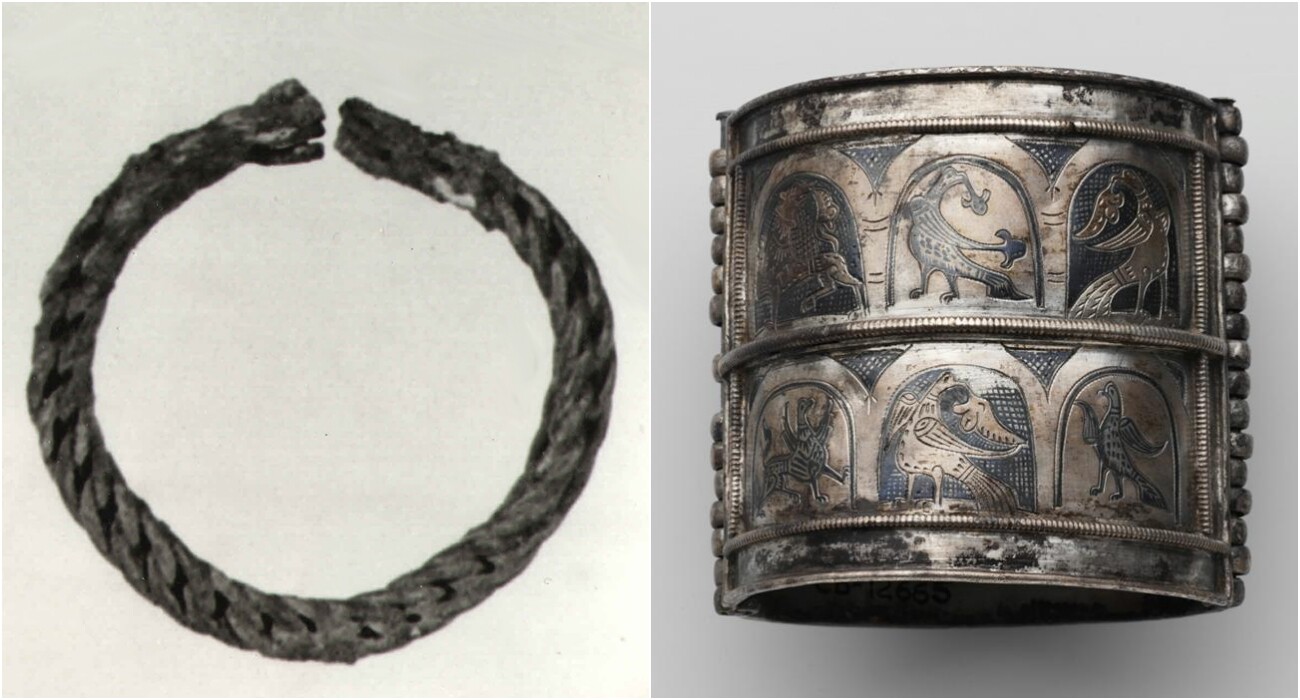
Bracelets, Rus', 13th century
Moscow Kremlin MuseumsIn Russia, a bracelet was called ‘obruch’ (translated from Russian as “one around the arm”). Archaeologists rarely find bracelets in ancient male burials, but chronicles mention princes and boyars "with bracelets on their hands". Bracelets were considered an attribute of power for men and a rich decoration for women. They were made of leather, covered with embossed patterns or from a cord wrapped with a thin metal ribbon, from solid metal (copper, bronze, silver, iron and gold), from glass. There were also casement bracelets – made of two semicircular halves, which were connected by a leather or metal clasp; they have been known since pre-Mongol times.
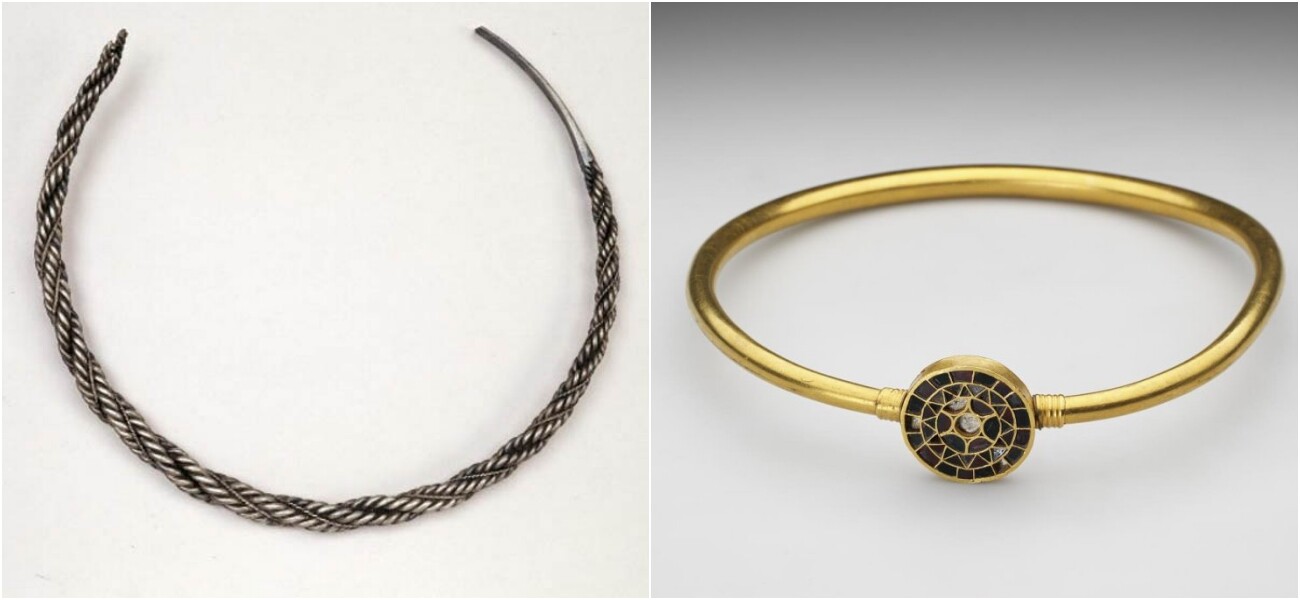
Slavic torques: silver and copper, 13th century, Rus'; (L), gold, glass, 5th century, Black Sea region
Moscow Kremlin MuseumsThe Slavic variety of torque was called ‘hrivna’ (from ‘hriva’, which means ‘mane’ or ‘neck’). As a special male decoration, the prince's druzhinniks received torques from their prince as a reward (in the 10th-12th centuries). At the same time, torques were also found in Slavic female burials, that is, it was an ornament for both sexes. They were worn with open ends both forward and backward, while parts of them could be flattened and decorated with patterns. Twisted torques were very popular. If the torque was thin, beads, round plaques, foreign coins, bells were fastened on it.
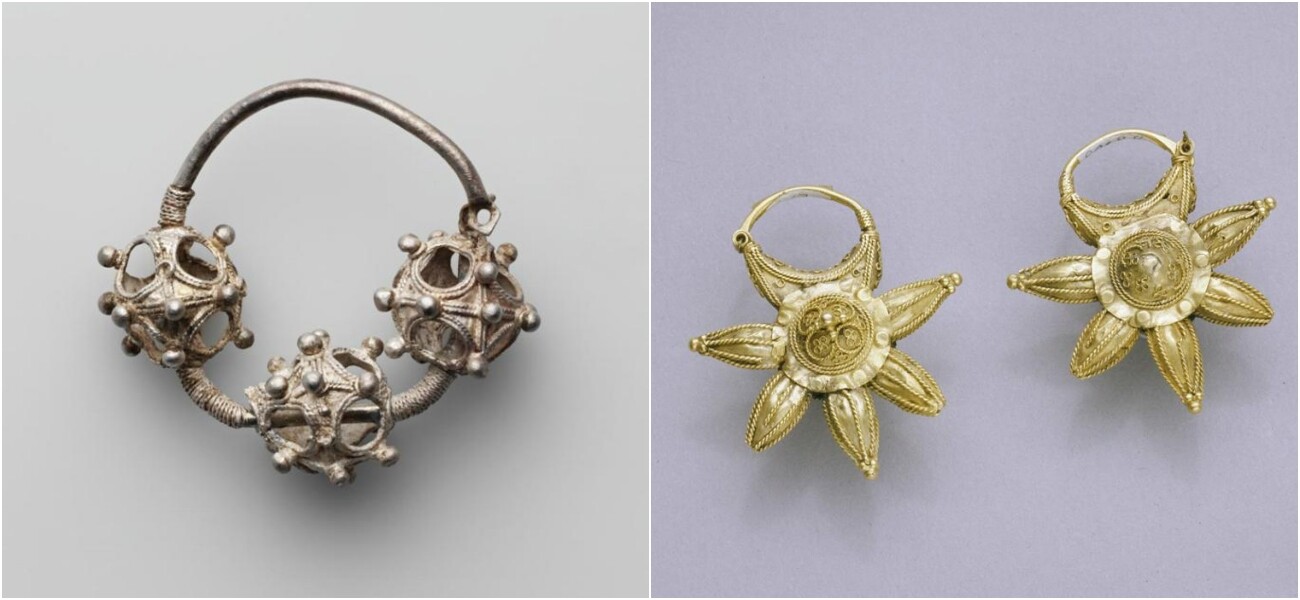
Temple rings, Rus', 12th century
Moscow Kremlin MuseumsTemple rings were the main "protective" decoration of Russian women; men did not wear them. The first temple rings in the form of simple spirals date back to the third and fourth millennia BC and, by the 9th century, more complex, multi-compound temporal rings were already a typical Slavic decoration. They were attached to a headdress, to a strap or a cloth strip encircling the head, woven into the hair, attached to the ears. They could be made of any metal, but always skillfully. Rings with seven blades or rays are often found – the number 7 was considered sacred by the Slavs from ancient times. The original Slavic name of this decoration, however, is unknown.
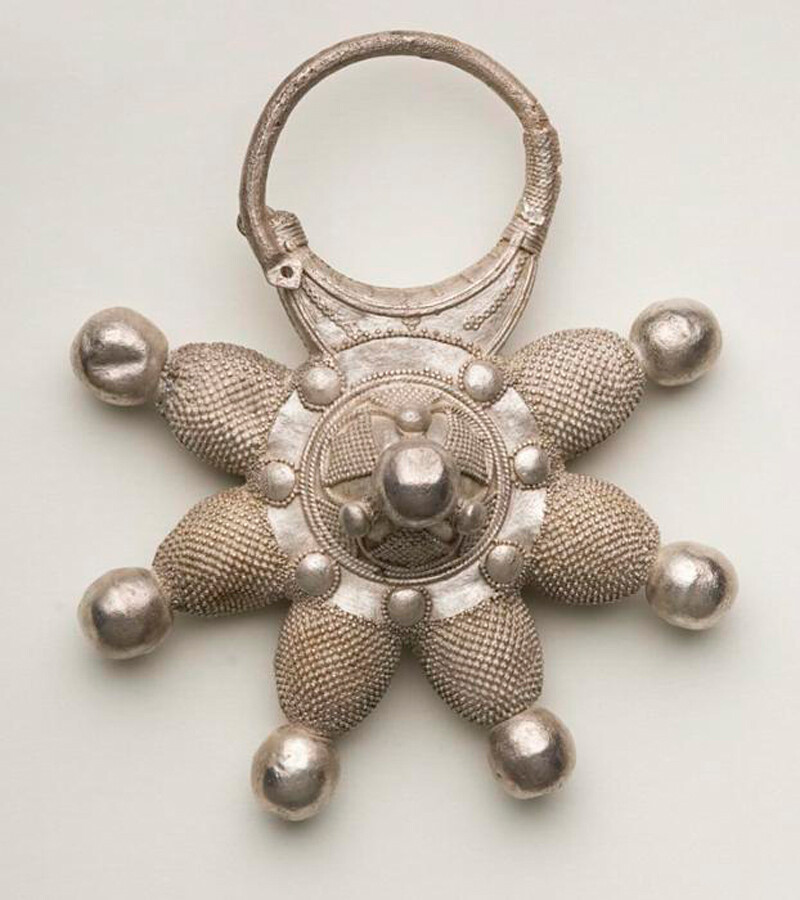
Kolt, Rus', 13th century
Moscow Kremlin MuseumsAnother women's jewelry, the real name of which we do not know – the term ‘kolt’ appeared in the 19th century among historians. They are hollow round, semicircular or star-shaped metal pendants. They were usually attached to the headdress on cassock chains with ornate links.
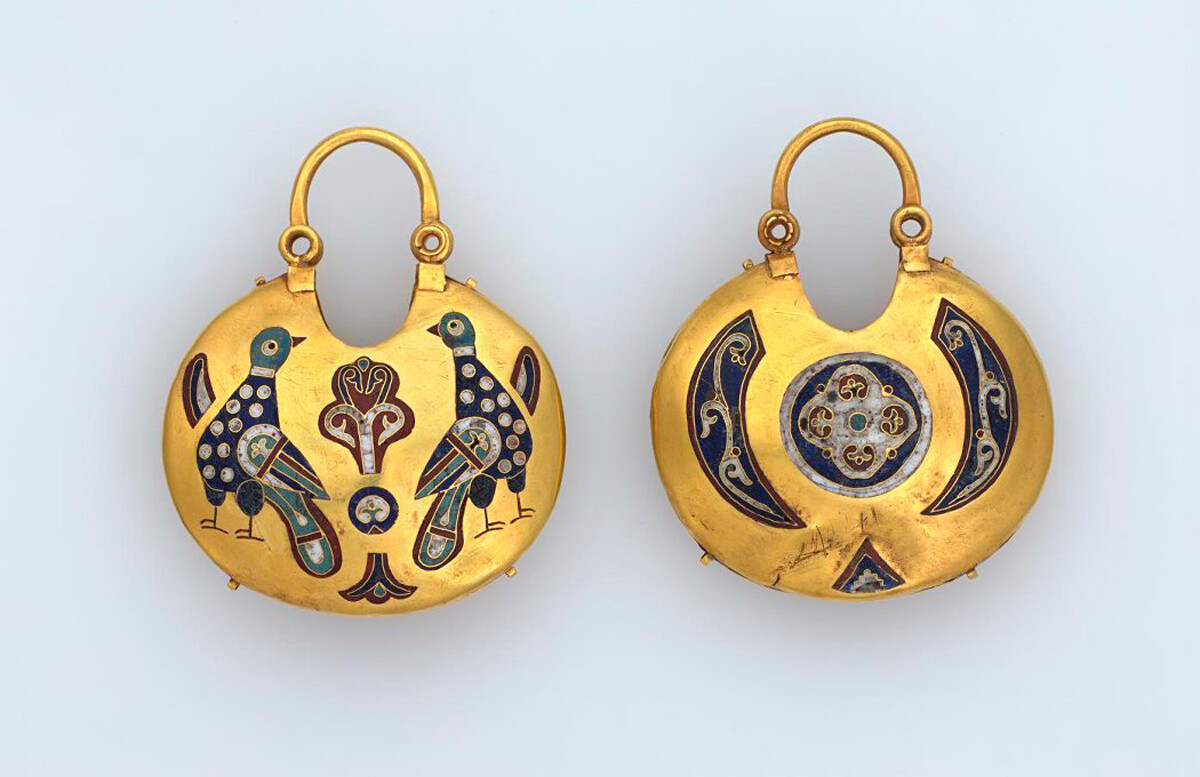
Kolt, Kiev, 12th century
Moscow Kremlin MuseumsThe kolts were covered with patterns in different techniques (niello, filigree, and others). These decorations were part of the wedding ceremony and they most often contain symbols of growth and fertility – sprouts and trees. It is assumed that pieces of cloth soaked in incense were placed in the inner cavity of the kolts.
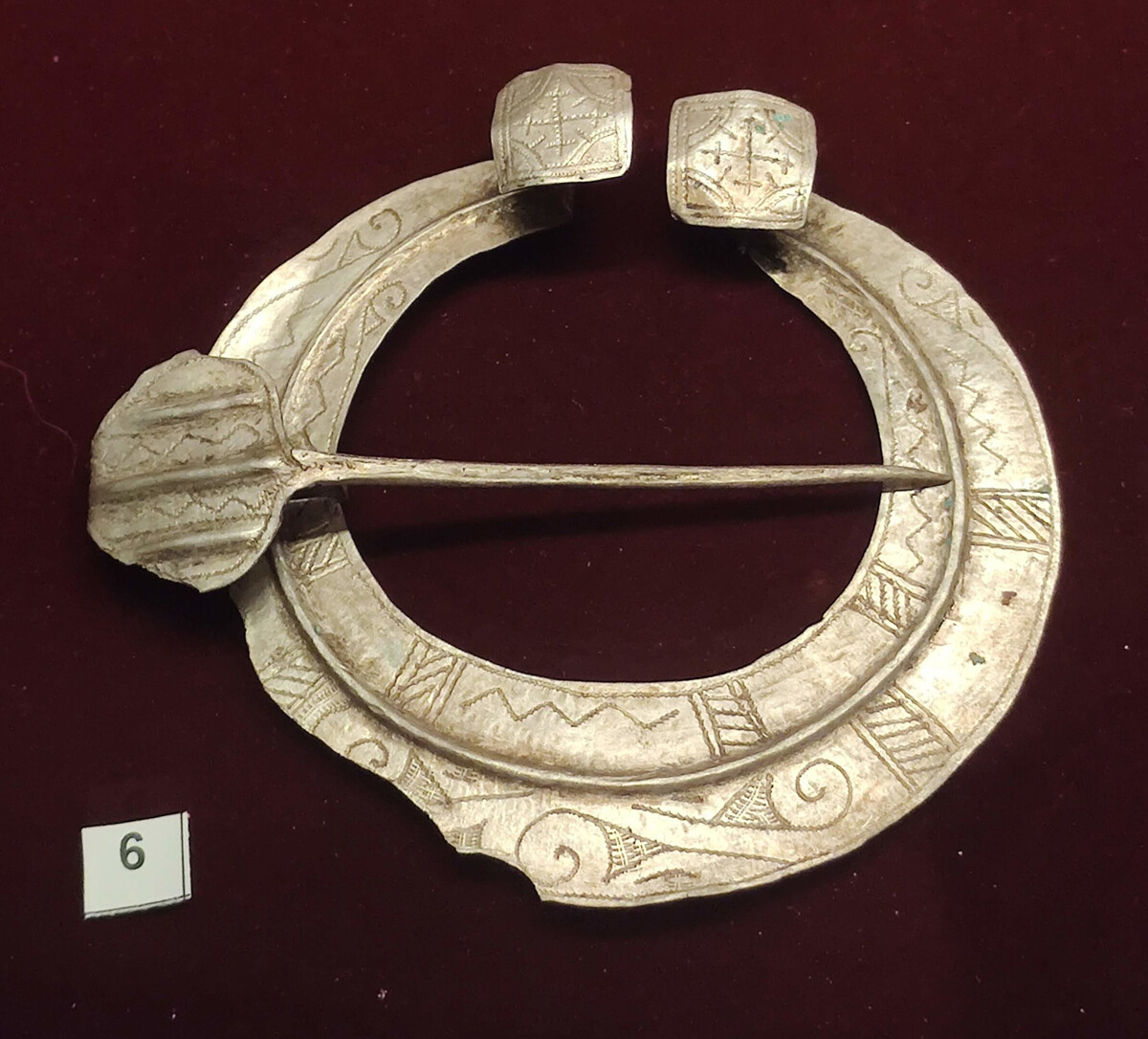
A fibula from Karelia region, 13-14th centuries, silver
Reda Kerbouche (CC BY-SA 4.0)The main function of fibulas is to fasten clothes. With the help of a fibula, it was possible to fasten a cape, a cloak and a shirt on the body.
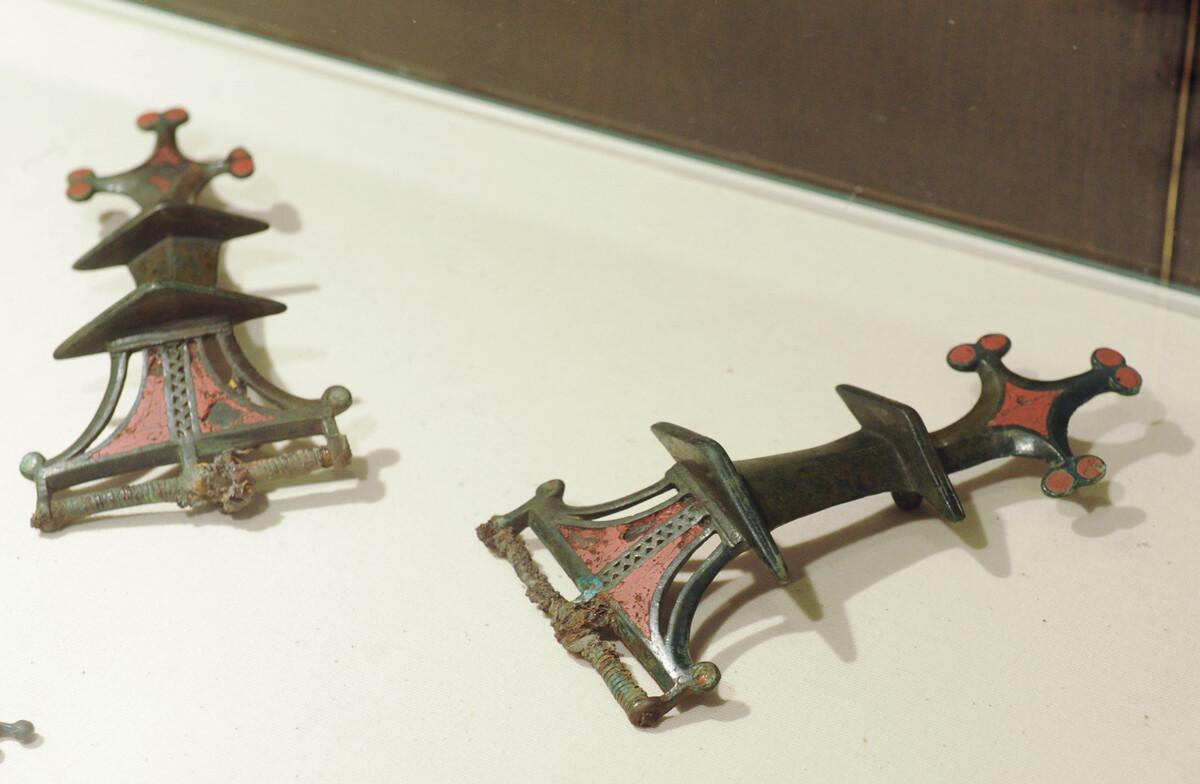
Fibulas from Bryansk region, Russia
Vladimir Fedorenko/SputnikExpensive, elaborately made fibulae were flaunted at the same time, their flattened opposite ends were made in the form of herbs and animals.

Rings, Russia, 13th century (L), Golden Horde, 14th century (R)
Moscow Kremlin MuseumsRings on fingers were worn by both men and women. Rings were mostly women's jewelry, but they were worn by both men and children. Moreover, both on the right and on the left hand. Historian Vera Bokova claims that girls started wearing rings only after they were engaged to the future groom – because of the sexual meaning of this jewelry.
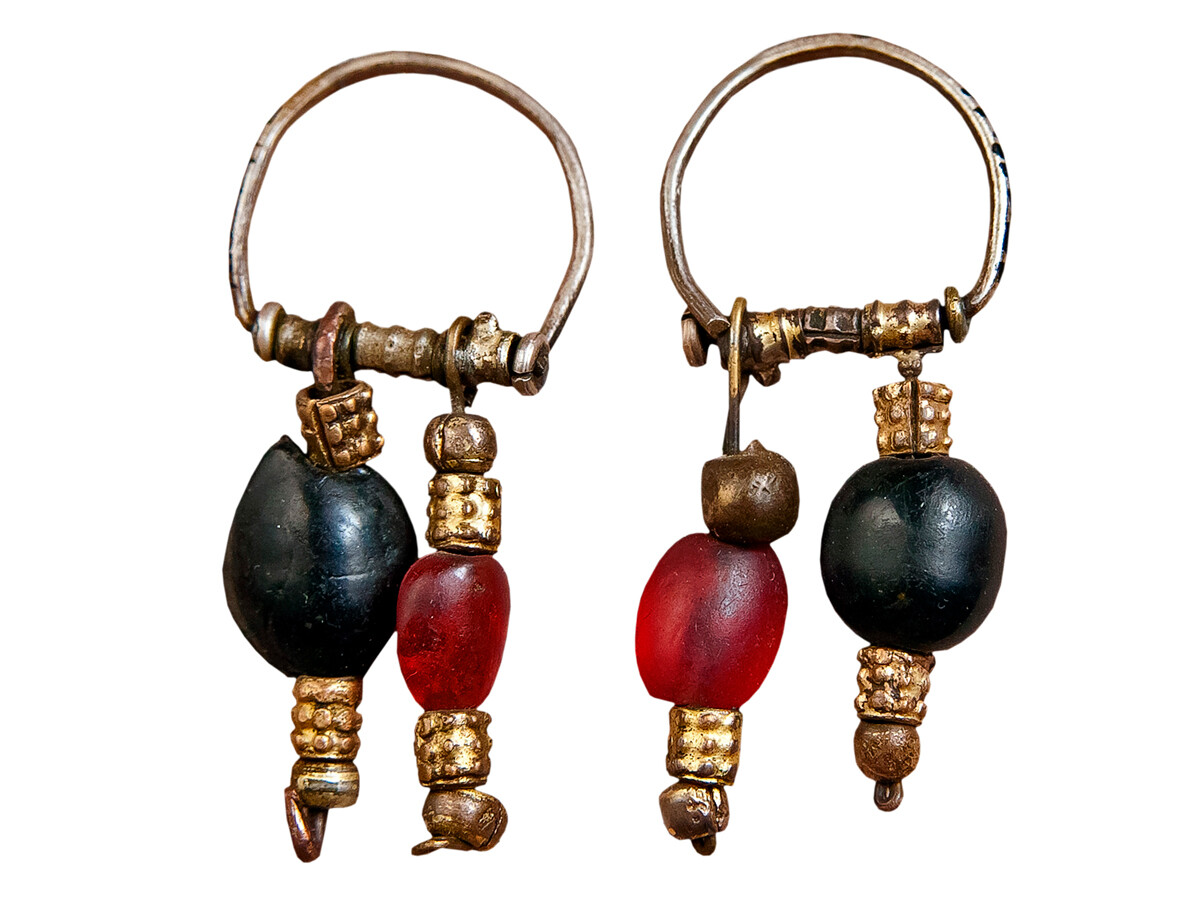
Russian earrings, 17th century
Alexandrovskaya Sloboda State Historical, Architectural and Art Museum-ReserveJudging by archaeological data, in ancient times, earrings were primarily a male military decoration. It was believed that earrings helped improve eyesight, which was necessary in battle (Read all about men's earrings in Russia here).
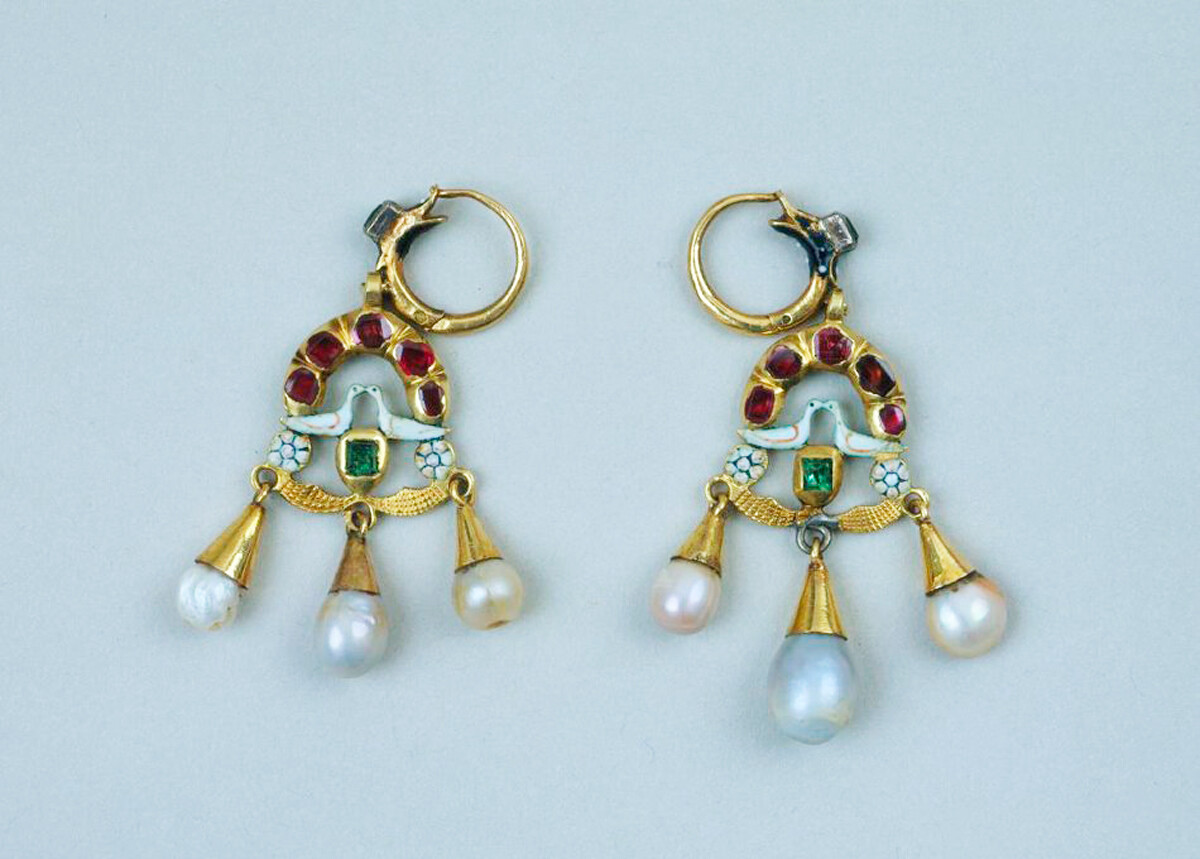
Russian earrings, 17th century
Moscow Kremlin MuseumsOf course, women also wore earrings and it was customary to pierce girls' ears, as it is now, at an early age.
If using any of Russia Beyond's content, partly or in full, always provide an active hyperlink to the original material.
Subscribe
to our newsletter!
Get the week's best stories straight to your inbox